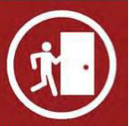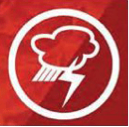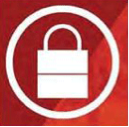Emergencies in Residence: Call 911 for municipal emergency services and then York Security 416-736-5333 or ext. 33333. If there is a fire, activate the fire alarm pull station nearest you if safe to do so as you exit the building. Visit the Emergency Preparedness website for more information.
Fire safety is everyone’s responsibility. Become familiar with all residence floor exits and know how to get to your designated evacuation assembly area. Talk to your Don if you have questions or concerns. Expect to participate in a fire evacuation drill at least once each semester. We encourage participation in these drills. Never assume that a fire alarm is only a drill. Remember, just because you can’t see flames or smell smoke doesn’t mean there isn’t an emergency situation that requires immediate evacuation.
Fire Safety
York Security and Residence Life Staff will direct and assist residents with the evacuation until Toronto Fire Services arrive. If you have information about someone remaining in the building, please pass the information on to Security Services or Residence Life Staff right away.
- Close the door behind you but do not lock it.
- Alert others to leave with you on your way to the nearest fire exit.
- Activate the nearest fire alarm pull station.
- Leave the building using the nearest stairs and exit.
- Help those who require assistance exit the building, if you can do so safely.
- Advise a Residence Life or Security Services staff member of the location of the fire.
If the fire alarm sounds, you must leave your residence immediately:
- Before leaving, check the door for heat; if hot to the touch, do not open. Use available materials like wet clothing or sheets to seal door cracks or clearances.
- If smoke is present, cover your mouth and nose and stay close to the floor.
- If your residence door is not hot and smoke is not present, exit then lock your door and leave by the nearest stairs or exit route.
- Do not use the elevator. Elevators are reserved for fire fighters.
- If smoke is encountered, use alternate stairs or return to your room/suite.
- Residence Life Staff will assist with notifying residents and evacuation.
- Do not re-enter the building until permitted to do so by an authorized official.
- Ask your Don for clarification on any Fire Evacuation Procedures.
Students who have a temporary or permanent disability that may require special assistance during an emergency evacuation should register with Student Accessibility Services.
- Residents who need assistance to evacuate the building should, in their best interest, inform their Residence Life Coordinator (RLC) and Housing prior to any emergency for pre-planned assistance.
- Housing will address special needs in their accommodations, where available. The RLC will assist to develop an evacuation plan and inform emergency personnel.
- If you, as an able bodied resident, encounter a student who has mobility issues during the evacuation process, do your best to assist that student without putting you, the student or both you and the student in more danger. Always alert Emergency Services in the event you see a student unable to reach safety.
Fire Prevention
Your Undergraduate Residence Occupancy Agreement requires you to abide by the following fire prevention measures:
- No candles, incense, fog machine or open flames permitted.
- No explosives or fireworks permitted.
- No decorating and/or posting on exterior surfaces, windows or hallway space, including room/suite door (i.e. flammable decorations hanging in hallway). Only white boards obtained from Housing are allowed on room doors.
- No propping fire doors open.
- No cooking appliances in rooms (unless they are approved appliances for suites).
- No cooking in kitchenettes; they are for snack preparation only.
- No smoking in residence, on balconies and/or outside areas close to entrances, windows or ventilation air intakes (must be nine metres away from building).
- Do not block entrances, exits or hallways. Ensure exits are unobstructed.
- Do not park in or block fire and emergency vehicle laneways.
- Do not tamper with or remove your smoke detector. If your smoke detector’s battery is low (it beeps all the time), please visit the Housing Office for a replacement.
- Inform a Don when fire extinguishers are discharged.
- Do not hang anything from fire sprinklers.
- Do not tamper with any fire alarm devices. Report any anomaly or concern to a Don and Housing.
As a reminder, the Residence Occupancy Agreement outlines obligations for fire safety.
Cooking and kitchen appliances (excluding a small compact refrigerator) are not permitted in residence rooms. Kitchen appliances provided in suites and common areas must be used in a safe and responsible manner.
All residents and guest(s) are required to exit in the event of a fire alarm and to follow the instructions of Fire Services personnel. Penalties will be imposed for the misuses of any fire equipment, tampering with fire safety devices, and/or causing fire alarms due to negligence or malicious intent.
Building Emergency Procedures
These icons will appear on the LCD screens located throughout the University and in residences to inform community members of an emergency. The most common emergencies are fire alarms and evacuations. In rare cases, emergencies include lockdowns, weather emergencies and unexpected emergencies. Please know what each icon means and the steps you need take in the event you see an emergency icon on the LCD screens throughout campus and in your residence building.

This symbol means conditions outside are safer than inside, such as a fire of bomb threat. Follow these steps if you are in residence and the LCD screens show the Evacuation symbol, when the announcement is made or the fire alarm is sounded:
- Take the closest but safest exit as posted. Use a secondary route if your primary route is blocked or hazardous.
- DO NOT USE ELEVATORS.
- Help those needing special assistance if you can do so without putting both you and other students in immediate danger.
- Go to designated assembly area.
- Wait for further instructions.
Do not re-enter the building until told it is safe to do so by Toronto Fire Services, Toronto Police Service or York Security.
Steps to follow when you are required to exit the building because of fire. If the fire is in your room:
- Close the door behind you but do not lock it
- Activate the nearest fire alarm pull station.
- Alert others to leave with you on your way to the nearest fire exit.
- Leave the building using the nearest stairs and exit.
- Help those requiring assistance exiting the building, If you can do so safely.
- Advise a Residence Life or Security Services staff member on the location of the fire.
- If the fire alarm sounds, you must leave your residence immediately.
- Before leaving, check the door for heat; if hot to the touch, do not open. Use available materials like wet clothing or sheets to seal door cracks or clearances.
- If smoke is present, cover your mouth and nose and stay close to the floor.
- If your residence door is not hot and smoke is not present, exit then lock your door and leave by the nearest stairs or exit route.
- Do not use elevators. Elevators are shut down as part of the evacuation procedure.
- If smoke is encountered, use alternate stairs or return to your room/suite.
- Residence Life Staff will assist with notifying residents and evacuation.
- Do not re-enter the building until permitted to do so by an authorized official. Ask your Don for clarification on any Fire Evacuation Procedure.
For use when conditions inside are safer than outside, such as external gas or a chemical release. When the announcement is made:
- Move residents, students and staff/faculty inside as quickly as possible.
- Help those needing assistance if it is safe to do so.
- Move out of the hallways and into residence rooms.
- Close windows and tape if possible, close doors and seal the gap between bottom of door and the floor using a wet towel.
- Turn off any air conditioning or heating systems until advised it’s safe to turn them on again.
- Stay away from all doors and windows.
- Wait for further instructions.
For use to remove you from a violent or potentially violent situation. For example, an individual armed with a gun, knife, explosives, etc. Do not confront the person.
- Call Toronto Police Services first and as soon as possible and provide as much information as possible, including:
- The location of the suspect,
- Description of the suspect, including name (if known), gender, race, height, hair colour, clothing description, weapons seen or indicated, what they said, if they indicated a specific target, direction of travel if they have left and other information the operator requests,
- Building name, location and floor,
- Nature of business of the building (science lab, research lab, office, student space, etc.),
- Any hazardous materials in the building if known,
- Request an ambulance if anyone is injured, and
- Notify any others in the area of the situation using any means possible (in person, by phone, runners, etc.)
- Call York University Security Services afterwards, if possible, at extension 33333, or 416-736-5333 or by using a Safety Phone.

For use in severe weather emergencies (i.e. tornado.) When the announcement is made:
- If you are inside, stay inside and find the best shelter.
- If you are outside, get inside if you can do so safely. Stay away from the outside of large buildings.




Connect with York University